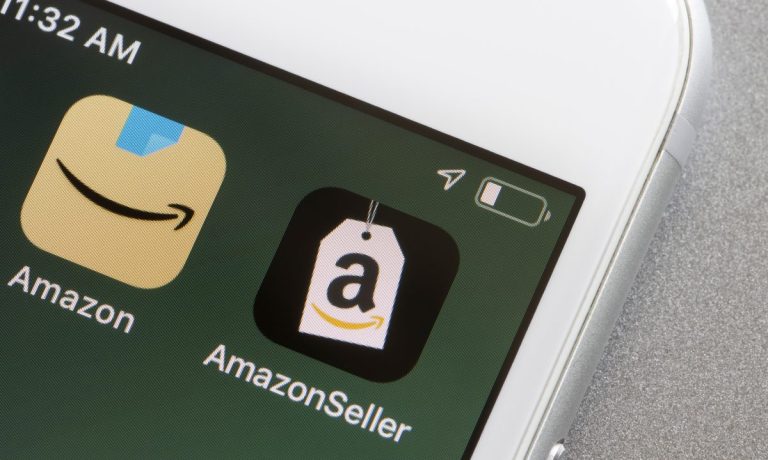
As business models reformulate in double-quick time, eCommerce is having evolutionary effects on the creation and discoverability of consumer goods, from the “push” mentality and limited SKUs of the not-too-distant past to the unlimited assortments found on eCommerce sites.
Despite its omnipresence, some think direct-to-consumer (D2C) brands have potential beyond major eCommerce sites they started out on — and it’s untapped to a surprising extent.
In a recent conversation with Karen Webster, Boosted Commerce co-founder Charlie Chanaratsopon, known for creating the Charming Charlie apparel and accessories brand, spoke of Boosted’s mission to “build a consumer products platform from tomorrow” by borrowing the muscle of major marketplaces — chiefly Amazon and Shopify — to empower a new generation of entrepreneurial product developers to scale even further with an omnichannel approach.
“These platforms have made product development democratic,” Chanaratsopon told Webster. “We view that as a universe where instead of us just taking risk, I’d rather take the business that went from zero to $5 million in revenue [online] … partner with [them], bring [them] to our platform and scale that business through omnichannel.”
He said Amazon and Shopify, specifically, perfected online marketplaces where entrepreneurs (Boosted prefers calling them “product developers”) create small businesses “that go from zero to $5 million to $10 million in revenue, because they found product-market fit.”
“It sounds obvious, but it’s not that easy [because] there’s 3,000 new people that have this bright idea per day and come onto Amazon,” he said. Only a handful make it, and those are the independent brands that Boosted is seeking to build a new omnichannel powerhouse.
See also: Boosted Commerce Lands $87M, Buys Six Amazon FBA Firms
Picking the Next Omnichannel Winners
Noting that Amazon and Walmart each enjoy dominant shares of an eCommerce sector worth roughly $1 trillion in 2021, Chanaratsopon said he’s “agnostic” as to where people shop, be it online, in-store or even via direct response advertising. It all comes down to product-market fit.
“[To] start a fresh platform from scratch [is] kind of what we did at Boosted Commerce,” Chanaratsopon said. “We said let’s take our backgrounds [and] build out a senior team. We know where the consumers are going, so let’s build out a great product [and] content portfolio of brands around the verticals that we focus on and build a Unilever of tomorrow.”
Getting there is another matter, and Chanaratsopon has a unique perspective on that.
Looking back at traditional models of product development and marketing by major consumer packaged goods (CPG) and D2C firms, he said, “Those organizations have done a great job through the years,” but did so with vast R&D teams, focus groups and the like. That model faded somewhat as eCommerce grew, and it’s poised to change again as omnichannel adds new dimensions.
The trick is picking the winners from thousands of platform-based small businesses. Webster asked how an omnichannel approach guarantees that the $5 million brand established on Amazon or Shopify becomes a $10 million brand using other platforms.
“We rank and score these brands and businesses differently,” Chanaratsopon said. He explained that Boosted has a category for “moon shot brands,” which means brands with explosive growth potential.
“If you score at that high level you get a lot more attention,” he said. “Our marketing team [is] going to build a brand book around that, which means we’re going to invest a lot more around who the customers are, customer cohorts, customer demographics, and psychographics” and “grow it [10x] over the next few years.”
Based on elements like high average order value and high repeat purchasing rates, he said Boosted can leverage its relationships to get those ‘moon shot’ products featured “on Target shelves, Home Shopping Network shelves, we don’t care if it’s a digital shelf or a physical shelf.”
“My very strong point of view is that to be a moon shot brand, you have to have omnichannel distribution, which means Amazon, Shopify, multiple marketplaces — you might be in Target, Whole Foods and QVC,” he said. “Some people would say TV shopping is so passé. We don’t believe that, and it kind of cascades through how we think about this as a business.”
See also: Boosted Commerce Rides The Marketplace Tailwind
Redefining Customer Experience
In pursuing his goal of building “the next Unilever,” Chanaratsopon does not think digital is the be-all and end-all for product marketing, saying that TV advertising and direct mail “are coming back” and brands need to learn where return on ad spend is optimal. It might be from an online marketplace, a physical store, or old school ads.
Webster asked what role content marketing plays in brand discoverability under this hybrid model, to which Chanaratsopon replied, “If a customer walks into a store and has the right customer experience, that’s content marketing. As we think about it at the digital shelf, [be it] Instagram, TikTok, Snapchat … we think about doing what’s most relevant to that customer.”
Conceding that not every brand Boosted invests in has moon shot potential, he said “we believe that 10% or 15% of them” can achieve transformative 10x growth.
“That’s an interesting proposition that no one has embarked on, but we believe we can be a leader in,” he said. “At the end of the day, we’re capital allocators and resource allocators.” That requires prudent judgment, accurate scoring, and good helping of business instinct into the mix.
Relying on a metric he calls “positive optionality,” Chanaratsopon said Boosted’s risk is lower from the jump “because these brands already make money.”
“They already have product-market fit,” he continued. “They have reviews and ratings. It’s you know up to us to say, ‘where else can [we] put them,’ but you’re in a spot where you’re not losing money from the get-go.”